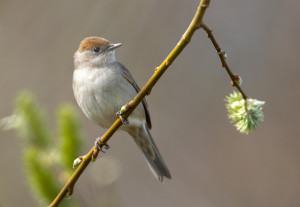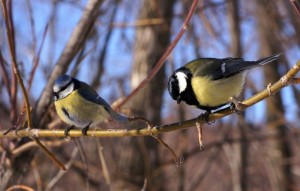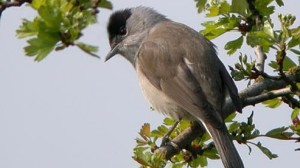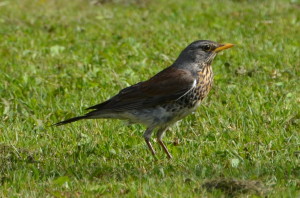Every year since 1979, the Royal Society for the Protection of Birds (RSPB) has asked people across the UK to spend an hour recording the birds they see in their garden: the Big Garden Birdwatch. The results are used to provide a snapshot of the bird life in our country, and to work out which species are in trouble and in need of help. The census is billed as the world’s largest annual wildlife survey, and last year nearly half a million people took part (not bad in a country of 64 million people), counting 7,274,159 birds. This year’s event took place over the weekend of 24—25 January, and we spent an hour on Sunday morning doing our bit.
Chap and I take part every year, and I love the enforced stillness that an hour spent at the window watching and counting birds brings (Chap covers the front of the house and I look out of the back). An extended period of observation allows you to see things you might not otherwise have noticed, such as the several times I saw a blue tit (Cyanistes caeruleus) and a great tit (Parus major) flying, perching and then flying on together, very much a twosome;
or the male blackcap (Sylvia atricapilla) feeding on the windfall apples—I have never seen this behaviour before (in fact, I have never seen a blackcap on the ground before), and always assumed they were insectivores rather than being fruit eaters as well. I saw two male blackcaps hanging around together, and wondered if they were perhaps part of a sibling or family group, or if simply male blackcaps aren’t very territorial (in contrast, the robins in our garden are forever chasing each other off), and later I saw a lone female. I hope they meet up and there’ll be lots of baby blackcaps this summer!

Female blackcap. Photo by Chris Romeiks (Vogelartinfo on Wikimedia Commons).
I was also really pleased to be able to add fieldfare (Turdus pilaris) to the list for the first time, as our Scandinavian guest is still with us. We first noticed him on 29 December last year, though he may well have been around before that, and since then he has been assiduously guarding the windfalls from his perch on the apple tree above them, or from one of the surrounding higher beech trees.
Of the more unusual birds we see, no siskins (Spinus spinus) or bullfinches (Pyrrhula pyrrhula) or bramblings (Fringilla montifringilla) this year, which was a shame.
Last year for the first time we were asked about other wildlife in our gardens too, so we were able to enter information about the frogs, badgers and hedgehogs that we have seen, as well as other animals.


